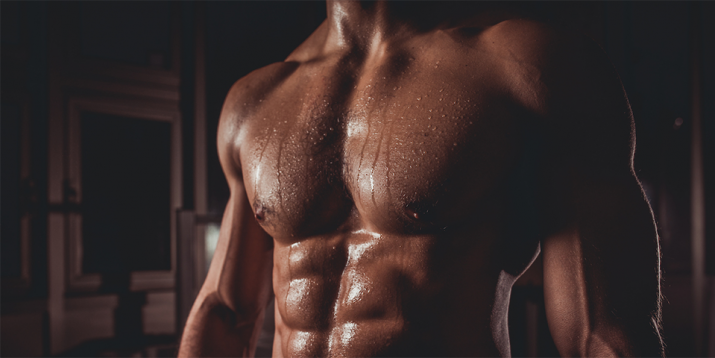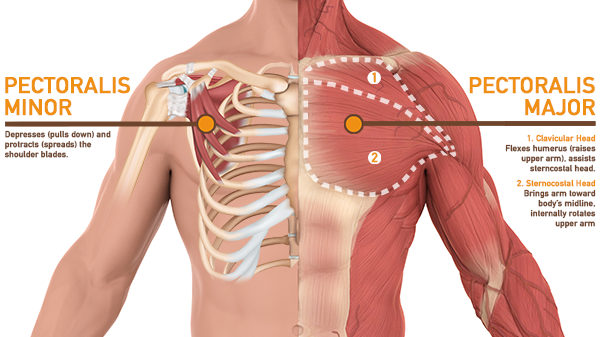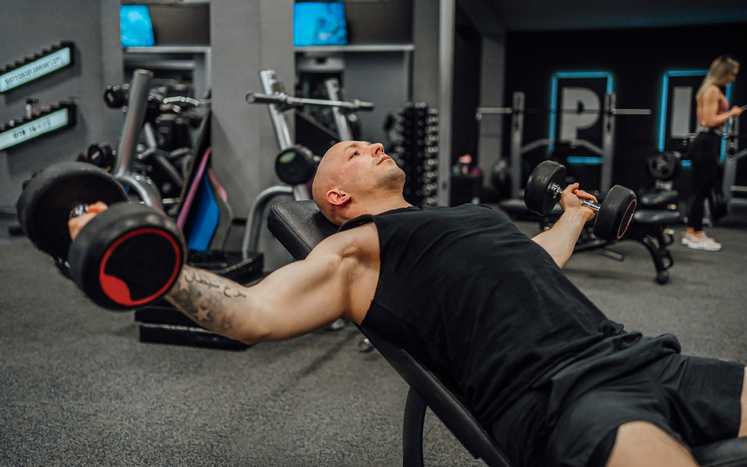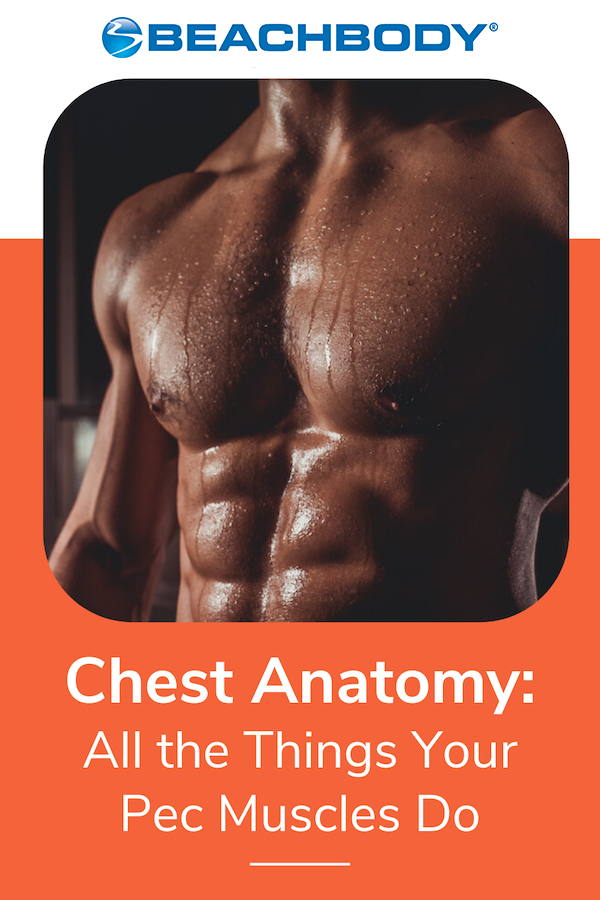Chest Anatomy: Marvel at All the Things Your Pec Muscles Do!

Strong, developed chest muscles (a.k.a. pecs) are the centerpiece of a fit physique. Not only do they look impressive, but they also make life in and out of the gym easier — whether you’re swinging opening a heavy door, pressing a loaded barbell, or corralling your squirmy kids.
You have two mighty muscles on both sides of your chest: The pectoralis major and the pectoralis minor, known collectively as your pecs. The primary function of your pectoral muscles is to adduct your arms, or pull them towards the midline of your body from various angles.
Here, we break down the anatomy of your chest muscles, plus how to target each to make them bigger and stronger.
Pectoralis Major

Of the two chest muscles, the pectoralis major (a.k.a. the pec major) is the one that commands the most real estate. You have one of these large, fan-shaped slabs on either side of your chest.
Each one spans half of the upper chest, and has attachment points on the sternum (breastbone), ribs, clavicle (collarbone), and humerus (long bone of your upper arm).
The pec major itself is comprised of two heads, which jointly attach to your upper arm. Both heads have overlapping responsibilities, but also distinct functions depending on the angle of upper arm motion:
- Sternocostal head. Originating at the sternum, the sternal head accounts for 80 percent of the pec major’s total size. As such, it powers the bulk of the muscle’s actions: bringing your arms toward your body’s midline (adduction), and rotating your humerus internally.
- Clavicular head. The upper portion of the pec major originates at the clavicle, and helps with the above actions, but also works to flex the humerus (raising your arm forward).
How to target the pec major
Different exercises can target a specific head, says Jennifer Novak, M.S., C.S.C.S., performance recovery coach and founder of PEAK Symmetry Performance Strategies.
Sternocostal head exercises
1. Bench press
- Lie on a flat bench holding a pair of dumbbells directly above your chest with your palms facing forward.
- Slowly lower the weights to the sides of your chest, keeping your elbows close to your body (not flared).
- Pause, and then push the weights back up to the starting position.
2. Dumbbell fly
- Lie back on a flat bench (you can also do this laying on the ground, as shown above), holding a pair of dumbbells at arm’s length over your chest, palms facing each other.
- Keeping your elbows slightly bent, slowly lower the dumbbells directly out to your sides until you feel a deep stretch in your chest.
- Pause, then slowly reverse the move, returning to the starting position.
- Keeping your abs engaged, lie back on a decline bench, holding a pair of medium-to-heavy dumbbells at the sides of your your chest. Your palms should be facing forward.
- With your feet flat on the floor, push the dumbbells over your chest.
- Pause, and then slowly lower the weights back to the starting position.
Clavicular head exercises
- Lie on a bench set to a 45-degree incline, holding a pair of dumbbells at arm’s length above your chest, palms forward.
- Keeping your core braced and your elbows close to your body (i.e., not flared), lower the dumbbells to the sides of your chest.
- Pause, and then push the weights back up to the starting position.
2. Incline fly

- Lie on a bench set to a 45-degree incline, holding a pair of dumbbells at arm’s length above your chest, palms facing each other.
- Keeping your elbows slightly bent, slowly lower the dumbbells directly out to your sides until you feel a deep stretch in your chest.
- Pause, then slowly reverse the move, returning to the starting position.
Pectoralis Minor

The pec minor is a small, triangular muscle that lies beneath the pec major and, despite sitting on your front, actually controls structures associated with your backside.
In addition to its attachment to the ribs, the pec minor affixes at the coracoid process, which is a small, hook-shaped protrusion atop the scapula (a.k.a. shoulder blade). Thanks to these attachment points, the pec minor helps depress (pull down) and spread apart the shoulder blades, and can assist with breathing.
How to target the pec minor
The pec minor pretty much works whenever your pecs work, so isolating it in the gym is no small task. “Targeting a small muscle like the pectoralis minor may be difficult, as it doesn’t seem to be a prime mover,” Novak says.
That said, you’ll get your pec minor involved if you do upper-body exercises in which your body leans forward and your shoulder blades draw downward, she adds.
1. Dip
- Grab the handles of a dips station and jump or step up to the starting position: feet off the floor, arms straight, ankles crossed.
- Keeping your forearms vertical and elbows in (not flared), allow your torso to lean forward as you lower your body until your elbows form about a 90-degree angle.
- Reverse the movement, returning to the starting position.
- Keeping your abs engaged, lie back on a decline bench, holding a pair of medium-to-heavy dumbbells at the sides of your your chest. Your palms should be facing forward.
- With your feet flat on the floor, push the dumbbells over your chest.
- Pause, and then slowly lower the weights back to the starting position.
3. Straight-arm pulldown
- Secure a resistance band with handles to a stable, immobile object just above head height. (A door works well if you have a door anchor for the resistance band.)
- Grab the handles with your arms extended straight out in front of you and your palms facing down. Step back until you feel tension in the band. This is the starting position.
- Keeping your chest up, shoulders down, and arms straight, simultaneously pull both handles down to your sides. Pause, and then return to the starting position.
How to Train Your Pecs Effectively
To maximize growth, work your chest twice a week, allowing at least 48 hours for recovery in between sessions. Be sure to incorporate a variety of chest exercises into your weekly routine to ensure you hit each and every inch of your pecs, thereby maximizing your strength and size gains.
And while you can’t “isolate” part of a muscle, you can emphasize certain muscle fibers of your pecs with different movements and angles. Press your arm forward and up, you’ll hit mostly the upper chest; forward and down, the lower chest.
Free P90X Workout
Work your upper body front to back with a full P90X Chest and Back Workout led by Tony Horton.
Want more? BODi Previews offers 130+ FREE workouts that range from strength training and cardio to yoga, Pilates, and barre.

